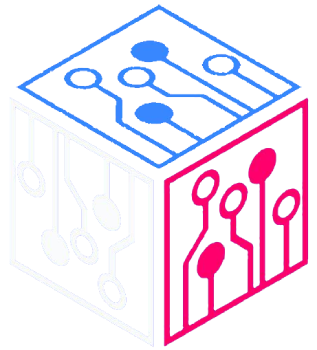The landscape of robotics is evolving rapidly, and the emergence of humanoid robots signifies a significant leap forward. Norwegian-based 1X has recently introduced its latest innovation, the Neo Gamma, which promises to blend the realms of technology and daily life more seamlessly than ever before. This article takes a closer look at the implications of this development, the challenges that lie ahead, and the role of artificial intelligence in shaping the future of home robotics.
Unveiled recently, the Neo Gamma serves as the successor to Neo Beta, and while it remains a prototype, it indicates a strong intention to advance into the residential sector. The robot’s design reflects a unique blend of functionality and user-friendliness, showcasing its ability to perform common household chores such as brewing coffee, handling laundry, and vacuuming. Unlike many competitors that prioritize industrial applications, 1X focuses on the home environment, aiming to carve its niche amidst a crowded field of humanoid robotics entrants.
1X’s commitment to creating a softer humanoid robot is especially notable. The use of knitted nylon not only enhances the aesthetic appeal but also minimizes injury risk during human interactions. This design strategy marks a significant deviation from traditional robotic forms, which can often be intimidating or harsh in appearance. The company’s aim of making Neo Gamma approachable aligns with its vision to promote safe interactions, particularly crucial as home robots may eventually serve vulnerable populations, such as the elderly.
Historically, home robots have encountered substantial hurdles, failing to gain widespread acceptance beyond the realm of robotic vacuums. The technology necessary for functional, reliable, and affordable home robots remains underdeveloped. To succeed, future humanoids must prove their utility in an array of household tasks while also being safe enough to coexist with family members, especially seniors. As the global population ages, there is an increasing need for technologies that enable independent living for older adults. This demographic shift underscores the importance of developing robots that can adapt to the complexities of human lifestyles.
One of the challenges that 1X must address with the Neo Gamma is ensuring that its AI-enabled features enhance safety and effectiveness in real-world environments. The necessity for keen environmental awareness cannot be overstated. Advanced AI systems must be able to navigate unpredictable surroundings and avoid accidents, making teleoperation a vital safety measure during emergencies. Achieving true autonomy is crucial but requires careful balance with oversight to ensure safety.
The success of Neo Gamma is also rooted in its backing by OpenAI, a significant player in the AI space. This strategic partnership offers vital resources and expertise in the development of embodied intelligence—the integration of physical robotic systems with sophisticated AI. The collaboration could result in new advancements in person-to-robot interactions, enriching communication through both speech and body language. However, the specific impacts of these ventures on the features of Neo Gamma remain unconfirmed.
Furthermore, the acquisition of Kind Humanoid has the potential to catalyze further innovation in 1X’s offerings. While the precise influence of these partnerships on Neo Gamma’s development has not been disclosed, they undoubtedly provide the research and development support needed for meaningful progress.
Although Neo Gamma showcases a promising step toward integrating humanoid robots into everyday life, significant work remains before these technologies can be fully realized in homes. The concept of a robot performing household duties is tantalizing, yet we must consider budget constraints, pricing models, reliability, and enhanced functionality. As companies plug away at overcoming these challenges, the anticipation builds around how robots like Neo Gamma will reshape our living spaces.
While the introduction of the Neo Gamma marks a pivotal point in the journey toward practical humanoid robotics, the challenges ahead are formidable. The intersection of artificial intelligence, humane design, and nuanced user interaction will dictate whether this technology is merely aspirational or truly transformative. As we remain vigilant observers in this evolving narrative, it is clear that the future of home robotics is not just about machines but about building a new relationship between humans and technology.


Leave a Reply